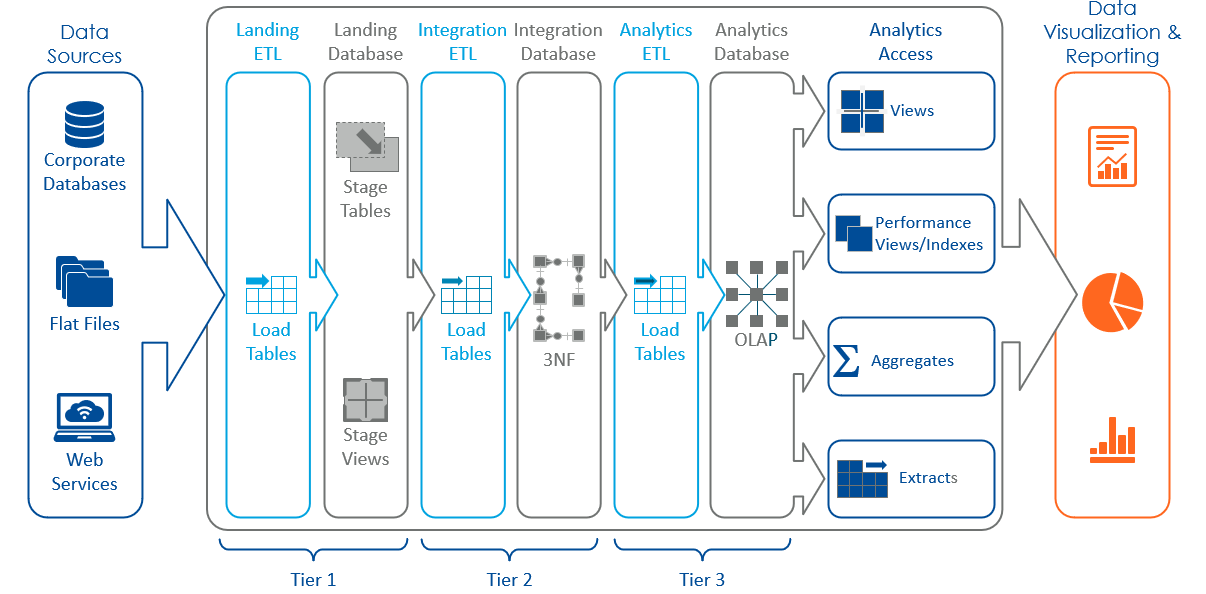The Challenge
A regional public transportation agency faced significant challenges with data scattered across multiple, unconnected systems, severely impacting their ability to make informed operational decisions. The absence of a unified data storage repository led to inefficiencies and increased the complexity of data integration efforts, resulting in higher maintenance costs. Inconsistent data quality and lack of real-time access prevented a comprehensive view of operations. Additionally, the siloed data hampered effective collaboration across departments, leading to missed opportunities for optimization and growth. These issues underscored the urgent need for a cohesive approach to data management and analytics to enhance decision-making and operational effectiveness.
The Solution
To address our client’s challenges, our data specialists followed Optimus SBR’s Analytics Assessment and Improvement Methodology (AAIM). This assessment process helps define what insights the dashboard reports must deliver; where the data comes from; and how to prepare, load, and store the data in a way that optimizes insights in a data visualization tool.
Analytics Assessment & Improvement Methodology (AIMM)

Roadmap & Implementation Plan
Based on the insights from the Analytics Assessment and Improvement Methodology (AAIM), we provided our client with five distinct strategic roadmaps to implement an Analytical Data Mart (ADM), each accompanied by cost estimates. The 3-tier ADM infrastructure was recommended because it delivers performance and analytical advantages such as ensuring optimal data accuracy, simplifying data access, and maximizing insightful analysis. The ADM solution also provides the flexibility and scalability to support reporting enhancements.
Analytical Data Mart (ADM)

We developed a comprehensive implementation plan with detailed roadmaps guiding the client to achieve their desired state of data capabilities. These roadmaps provided a phased approach with short-term, mid-term, and long-term recommendations to improve data integration and decision-making capabilities and align with the client’s “cloud-first” objective. By defining necessary data disciplines, such as data engineering, data architecture, data analytics, data infrastructure, and data quality assurance, we equipped them with a clear path forward. Ultimately, the client used these roadmaps to build the ADM, enabling them to streamline operations, enhance data-driven decision-making, and foster cross-departmental collaboration.
Analytics capabilities streamlined data integration and enhanced decision making
The Results
The project delivered a comprehensive plan that empowered the client to enhance their data integration and decision-making capabilities while advancing their “cloud-first” objective. The data strategy provided the client with clear, actionable roadmaps to optimize their data management practices, leading to improved data quality and more effective use of their data assets. The roadmaps included the “cloud-first” goal the organization was moving toward and assessed the suitability of various cloud services to meet ADM design, construction, and operational needs.
The implementation plan for the ADM gave the client a structured approach to achieve a centralized, cloud-based data repository, which streamlines operations and fosters cross-departmental collaboration. By adopting this strategy, the client was able to reduce on-premises data management costs, increase scalability, and improve the flexibility of their data operations. These outcomes have enabled the organization to drive continuous improvement, leverage their data more effectively, and make more informed, timely decisions.




Industry Insights
Service Insights
Case Studies
Company News